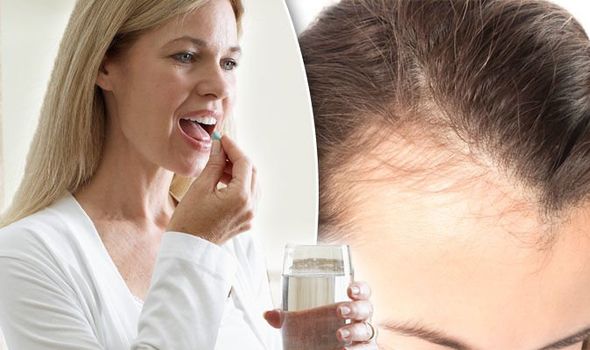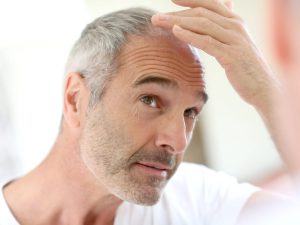Low Vitamin D Linked To Health Conditions And Hair Loss
“I’ve come down with yet another winter virus and there’s still a month of the season to endure.”
“I’m now mid-life and the illnesses of old age loom large and concern me – how can I avoid the ravages of Parkinson’s and Alzheimer’s disease, or brittle bones?”
These seemingly disparate illnesses all have a common factor – they are associated with Vitamin D deficiency in humans. Endemic diseases such as diabetes, high blood pressure, ‘stroke’, heart disease, depression, gum disease, seasonal influenza – as well as certain forms of cancer, multiple sclerosis, tuberculosis, autism in children or body muscle mass wasting also share this link.
The potential to develop autoimmune conditions such as alopecia areata, vitiligo, psoriasis, & inflammatory bowel disease is believed to increase with Vitamin D deficiency. The risk of skin cancer is – paradoxically – decreased with adequate levels of Vitamin D.
“But don’t we get Vitamin D from the sun?”
Whilst exposure to sunlight remains the most efficient & effective means to maintain optimal Vitamin D levels, this is always regularly possible for many people living in North America or northern Europe. Winters are long, and even in the milder seasons of spring & fall, it’s often still too chilly to be outdoors with one’s upper body exposed.
Australians – who have the world’s highest incidence of melanoma – now take extraordinary precautions to avoid the sun. As a consequence four out of five patients routinely tested show decreased Vitamin D levels ranging from ‘insufficient’ to ‘severely deficient’. Government health screening of nursing home residents found extensive Vitamin D depletion among the elderly.
So what is Vitamin D?
Vitamin D (as Cholecalciferol) is synthesised from sunlight when our bare skin is exposed to it. In a further conversion cascade involving enzymes from the liver & kidneys, the active & most potent form of Vitamin D – termed Calcitriol – is produced & stored in the liver & to a lesser extent, the tissues of the body.
Although commonly referred to as a ‘vitamin’, Calcitriol is a biological response-modifying steroid hormone – considered the most potent steroid hormone in the body.
Vitamin D is essential for the active absorption of Calcium & Phosphorus from the gut; regulating their utilisation within the body. Vitamin D is also integral to the production & balance of cells that constantly remodel our bones, the conversion of inactive thyroid hormone to the active form which influences every body cell, and aids in preventing Calcium and some other minerals from being excreted via the kidneys.
How much do we need?
In adult requires around 4,000 International Units (IU) i.e. 100 micrograms of Vitamin D per day. Approximately 20-30 minutes of strong sunlight on bare, non-sun screened skin – avoiding the hottest part of the day – will produce approximately 20,000 IU of Vitamin D, and provide a ready reserve of stores.
Melanin is conjugated in the skin to protect us against UV light. When a level of 20,000 IU of Vitamin D is achieved, melanin combines with ultra-violet light to (co-incidentally but purposely) limit Vitamin D production; corrupting excess Cholecalciferol so it cannot be further converted. According to Vieth (1999) there has never been a substantiated case of Vitamin D toxicity from sun exposure alone.
What food sources provide Vitamin D?
Dietary sources of Vitamin D are egg yolk; ‘oily’ fish such as salmon & sardines, cod liver oil – or EPA/DHA nutritional supplements, Vitamin D fortified bread & cereals, or milk. Be mindful though a standard glass of milk will provide about 100 IU of Vitamin D only – so you’d need to drink 40 glasses of milk per day to achieve 4,000 IU!
Who’s most at risk to be Vitamin D deficient?
All folk who because of old age, frailty, infirmity or disability are predominantly confined to the indoors.
Those who for religious or cultural reasons completely cover themselves whenever in public.
Darker skinned people such as those of African-American descent, immigrants from North Africa, full-blood Aborigines, or Pacific Islanders. These groups may require 5-10 times longer exposure to synthesise the same amounts of Vitamin D that a fair skinned person would produce in 10-30 minutes. Because of their skin’s deeper pigment, many younger people and women within these groups tend to avoid exposing their bare skin to the sun.
Skin & Health problems:
- Severe, systemic eczema/psoriasis or other skin disorder.
- Liver disease may inhibit the conversion of Vitamin D to its active form.
- Malabsorption due to its many causes can prevent dietary Vitamin D uptake and utilisation.
- ‘Lactose intolerant’ people cannot properly digest milk, so they will not absorb the Vitamin D it contains.
Those who take Phenytoin Sodium (Dilantin) in long-term anti-convulsant therapy may acquire a ‘medication-induced’ Vitamin D deficiency due to this drug.
Vegetarians often have difficulty raising their Vitamin D levels through oral supplementation as the fatty acid content of meals is required to facilitate absorption. Daily sunlight exposure of 15-30 minutes is the better option (avoiding the hottest period of the day), or Vitamin D injections may be considered.
About the Author: Tony Pearce is a Specialist Trichologist & Registered Nurse. He is a founding member of the Society for Progressive Trichology & the official lecturer for Analytical Reference Laboratory (ARL) for hair loss & hormone imbalance. In Australia he can be contacted on +61 2 9542 2700, or through his website at www.hairlossclinic.com.au. Copyright Anthony Pearce
*A qualified Trichologist has studied & successfully completed a recognised Academic Trichology Educational Program. References for this article are available on request.
Copyright Anthony Pearce 7/2007





